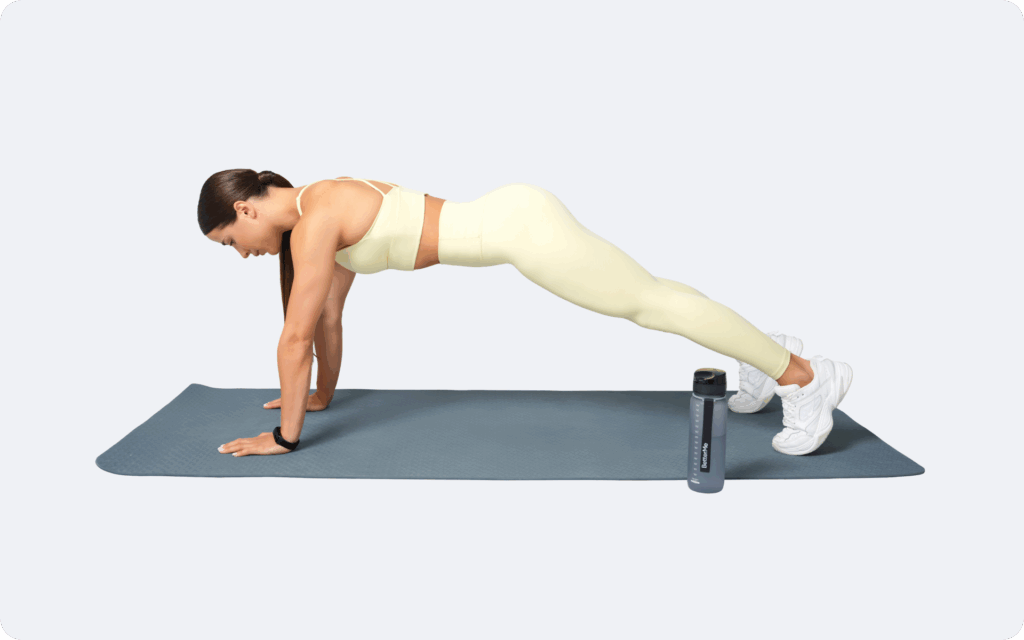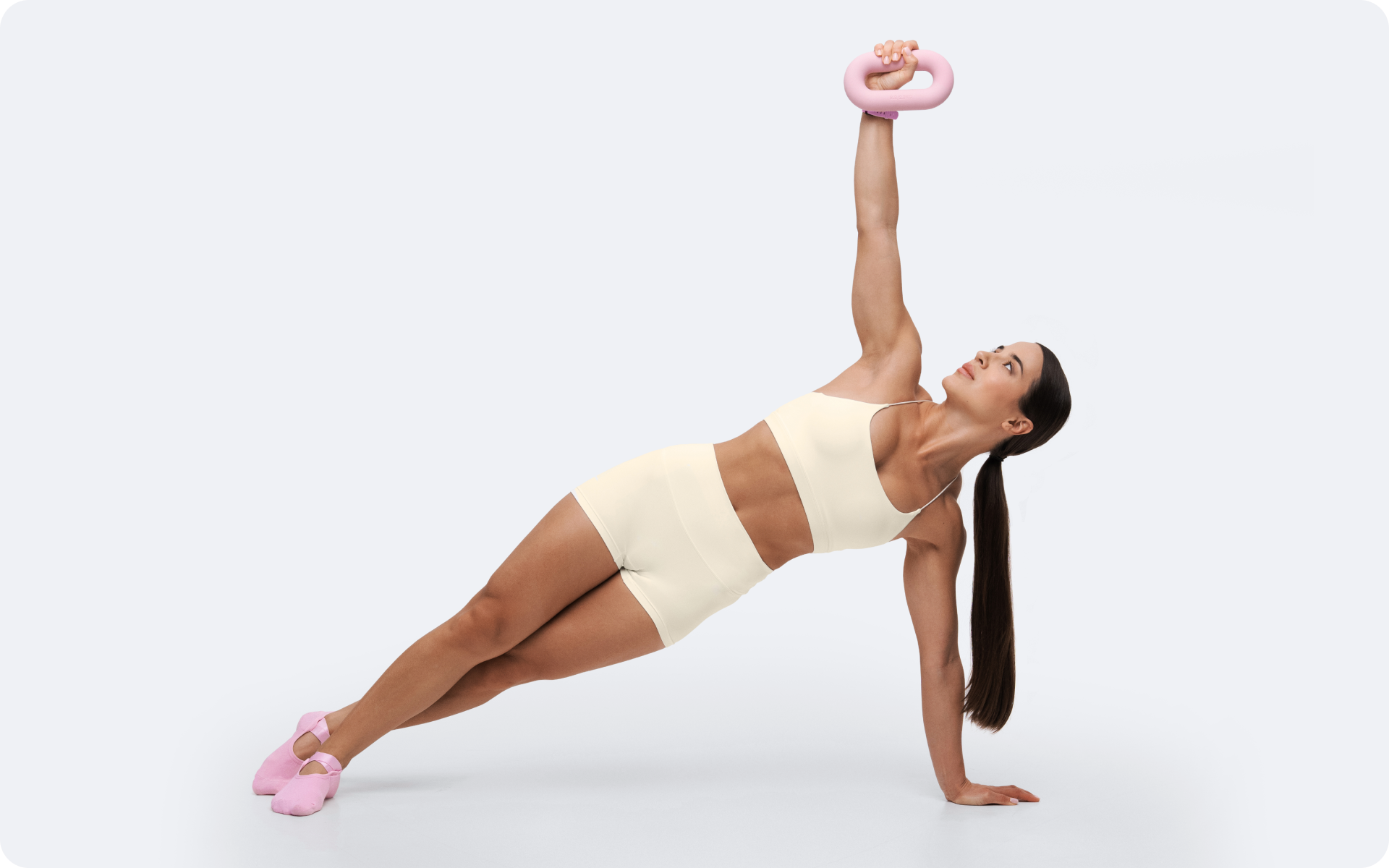You don’t need to go to the gym every single day to get in shape. In fact, trying to do too much too often will only leave you drained, frustrated, and questioning why you even started. That’s why the 4-days-a-week workout plan has become something of a secret weapon for people who want results without burning out.
Four days may not sound like much, but it’s enough – enough to get stronger, enough to feel more confident in your own skin, and enough to move better, sleep better, and think more clearly. It’s the kind of schedule that makes room for your job, your family, your personal downtime, and your goals.
This isn’t a crash course or a bootcamp mindset. It’s a realistic commitment to your health that actually fits into your life. Whether you’re starting from scratch or just want something that’s more manageable, the 4-day plan gives you structure without sucking the joy out of movement. And yes, you can absolutely see progress.
So if you’re tired of “all or nothing” fitness advice, you’ve come to the right place. Let’s break down what a solid 4-day routine looks like and how to make it work for you.
Is 4 Days of Working Out Enough in a Week?
Yes, a 4-days-a-week workout plan is not only enough, it’s often ideal for long-term progress and sustainability. Many fitness experts and exercise scientists agree that quality and consistency matter far more than the number of days spent in the gym (1).
Why Recovery Is Just as Important as Training
Intense training results in the accumulation of fatigue, as well as creating small tears in muscle fibers. The stress placed on the muscle triggers muscle protein synthesis and What happens after – the recovery – is where the real growth and strengthening occur. Without proper rest, the body doesn’t have the opportunity to rebuild those tissues, which can lead to stalled progress, fatigue, or even injury (2).
Overtraining, particularly without a structured program, can contribute to:
- Chronic fatigue and performance plateaus (3)
- Increased risk of injury, particularly in joints and connective tissues (4)
- Elevated stress hormone levels and disrupted recovery patterns (5)
How Four Days Hits the Sweet Spot
A 4-day schedule allows enough frequency to create progress while giving your body sufficient time to recover(6, 7). For most people, this creates an effective balance between effort and recovery.
Some of the most important benefits include:
- Sufficient training volume for fat loss, muscle building, or improved endurance (8)
- Built-in recovery days to support muscle repair and energy replenishment (9)
- Flexibility to adjust around work, travel, or personal commitments
- Lower risk of burnout or excessive fatigue compared to 6-7 day routines
BetterMe: Health Coaching app helps you achieve your body goals with ease and efficiency by helping to choose proper meal plans and effective workouts. Start using our app and you will see good results in a short time.
What the Research Says
The American College of Sports Medicine recommends a minimum of 150 minutes of moderate-intensity exercise per week, plus strength training at least twice weekly. A properly structured 4-day plan easily fulfills these guidelines (10).
In addition, a 2016 study in the Journal of Sports Sciences found that total training volume, not frequency, had the greatest impact on muscle growth (11).
In other words, individuals who train 3-4 times a week with smart workout programming achieved results comparable to those who train more frequently.
A 4-days-a-week workout plan is a realistic and effective structure for most fitness goals. With the right intensity, variety, and commitment, four well-executed sessions per week can drive real results without overhauling your lifestyle or compromising recovery.
Read more: 7-Day Workout Routine to Build Muscle: Is It a Good Idea?
Can I Build Muscle Working Out 4 Days a Week?
Yes, and not just a little. A 4-days-a-week workout plan gives you plenty of time to build lean muscle, improve strength, and still have energy for your rest days. The key isn’t just how often you train, but how well each session is structured and how your body responds in between workouts.
Here’s what you need to build muscle:
- Progressive overload – gradually increasing the weight or intensity over time (12).
- Good exercise selection – particularly compound moves such as squats, presses, and rows (13).
- Consistent rest and recovery – muscles grow when you’re not training, not during (14).
- Adequate nutrition – especially protein, to support muscle repair (15). The recommendation is 0.75g of protein per kilo of body weight per day, which works out as 56g (2oz) a day for a 75kg (11st 11lb) man and 45g (1½ oz) a day for a 60kg (9st 6lb) woman (16).
What makes four days a week effective is that it checks all these boxes without tipping you into overtraining. You get enough time to work each major muscle group, but also enough recovery to bounce back stronger for the next session.
Researchers have found that training frequency doesn’t matter as much as total weekly volume. In other words, someone who trains four days a week with focus and structure can build just as much muscle as someone who trains six or even seven days a week as long as the workload is balanced.
With that in mind, here’s an example of how you could break down your week:
- Day 1 – Push (chest, shoulders, triceps)
- Day 2 – Lower Body (quads, glutes, calves)
- Day 3 – Rest
- Day 4 – Pull (back, biceps)
- Day 5 – Lower Body (hamstrings, glutes, core)
- Days 6 and 7 – Rest, walking, stretching, or active recovery
This setup helps you hit every muscle group at least once, with enough flexibility to adjust for your own pace or schedule. It also works really well as a 4-days-a-week workout plan to build muscle, particularly if you’re looking for something realistic and sustainable in the long term.
What Is the Best 4-Day Gym Split?
There’s no single “best” way to split up your workouts. It really depends on:
- Your goals
- Experience level
- Schedule
That being said, a 4-day workout split will give you plenty of flexibility to train effectively without overloading your week. The key is to make sure your plan targets all the major muscle groups with enough frequency to see results.
Here are a few common and effective ways to break up a 4-day gym routine (17):
1. Upper/Lower Split
This one’s simple, balanced, and ideal for people of most fitness levels.
- Day 1: Upper body (chest, back, shoulders, arms)
- Day 2: Lower body (quads, hamstrings, glutes, calves)
- Day 3: Rest
- Day 4: Upper body
- Day 5: Lower body
This approach works well if you want to train each muscle group twice a week, which research has suggested is optimal for muscle growth (18). It’s also easy to modify as you can go heavier one day and focus on form or speed the next.
2. Push/Pull/Legs Split
This structure divides workouts based on movement patterns.
- Day 1: Push (chest, shoulders, triceps)
- Day 2: Pull (back, biceps)
- Day 3: Rest
- Day 4: Lower body
- Day 5: Core + conditioning or mobility work
Push/pull/legs splits are great for people who like shorter workouts focused on fewer muscle groups per session. It also helps manage fatigue because you’re not overloading the same muscles on back-to-back days.
3. Full Body Split (x4 Days)
Yes, you can train your full body four times a week – and for some people, it’s actually more effective than isolating muscle groups.
- Day 1: Full body (strength focus)
- Day 2: Full body (lighter weights, more reps)
- Day 3: Rest
- Day 4: Full body (moderate weights, supersets)
- Day 5: Full body (mobility, core, or endurance focus)
This works well if you’re short on time, prefer simple sessions, or want to train at home with limited equipment. It’s also easier on the joints as the stress is spread out more evenly.
Choosing the Best Split for You
To figure out which split fits your life best, ask yourself:
- Do I prefer short, focused workouts or longer sessions?
- Do I enjoy training certain muscle groups together?
- Do I need flexibility for busy weeks or travel days?
No matter which approach you choose, what matters most is that you stick to it consistently. A well-structured 4-day split will give your muscles enough stimulus to grow while still allowing time to rest, eat well, and live your life.
This type of structure also supports variations such as:
- A 4-day workout plan for females
- A 4-day workout routine for beginners
- Advanced routines that are tailored to specific goals such as hypertrophy or endurance
It’s adaptable, and that’s what makes it doable.
Read more: Lower-Body Gym Workout for Female Beginners: Complete Guide
Is It Okay to Do Full-Body Workouts 4 Days a Week?
Absolutely! Doing full-body workouts four times a week can be a really smart approach, particularly if you like variety, efficiency, and flexibility in your training. It’s not only “okay” for some people – it’s actually the best fit.
The idea behind full body workouts is simple: instead of isolating muscle groups each day, you train the entire body in each session. This may sound intense at first, but when the workouts are programmed well, it can actually reduce fatigue, balance muscle use, and improve performance.
Who Might Benefit from Full-Body Workouts?
A full-body routine can work for just about anyone, but it’s particularly useful if:
- You’re just starting out and learning the basic movements
- You don’t want to commit to complex splits
- You train at home or have limited equipment
- You’re focused on fat loss or overall fitness rather than size alone
This makes it a great fit for a 4-days-a-week workout plan for beginners, where the focus is on mastering form, building consistency, and developing strength across the whole body.
What It Looks Like in Practice
Here’s an example of how a full-body split could look across four days:
- Day 1: Strength Focus – squats, presses, pull-ups
- Day 2: Endurance + Core – light weights, high reps, planks, dynamic movements
- Day 3: Rest or active recovery
- Day 4: Power + Speed – cleans, kettlebell swings, jump squats
- Day 5: Stability + Mobility – bodyweight exercises, balance drills, stretching
Each session hits all the major muscle groups, but in different ways. This variety helps prevent overuse injuries and keeps things fresh, which is important when you’re trying to stick to a routine in the long term.
What About Recovery?
With full-body workouts at home, rest becomes an even more important factor. That’s why smart workout planning is essential so you don’t go all-out every day. Alternating heavier sessions with lighter, more recovery-based ones gives your muscles time to bounce back while still staying active.
What Is a Good 4-Days-a-Week Workout Plan?
Now that you know the structure matters, let’s talk about what an actual 4-days-a-week workout plan can look like in real life, not just in theory. A good plan doesn’t need to be overly fancy or packed with trendy exercises. It just needs to check a few key boxes: consistency, balance, progression, and flexibility.
Whether your goal is strength, endurance, or weight loss, the right plan should be tailored to your starting point; not someone else’s.
Here’s a Simple, Effective Template (19):
Day 1 – Upper-Body Strength
Reps and Sets: 3 sets of 8-12 reps for each move
Sample Moves:
-
- Incline push-ups or bench press
- Bent-over rows
- Overhead dumbbell press
- Tricep dips (use parallel bars or bench)
- Plank hold – 3 sets of 30-45 seconds
Day 2 – Lower-Body Strength
Focus: Quads, hamstrings, glutes, calves
Reps and Sets: 3-4 sets of 10-12 reps
Sample Moves:
- Squats or goblet squats
- Romanian deadlifts
- Glute bridges
- Walking lunges – 10 steps per leg
- Standing calf raises – 12-15 reps
Day 3 – Rest or Light Activity
Active recovery ideas:
- 20-30 minutes of gentle walking
- Light yoga or stretching
- Foam rolling or mobility drills
Day 4 – Full-Body Conditioning
Focus: Cardio, core, stability, and mobility
Structure: Circuit style – perform each move for 30-40 seconds and rest for 20 seconds between. Repeat the circuit 3-4 times.
Sample Moves:
- Kettlebell swings or jumping jacks
- Bodyweight step-ups
- Mountain climbers
- Russian twists
- Bear crawl holds – 30 seconds
Reasons why BetterMe is a safe bet: a wide range of calorie-blasting workouts, finger-licking recipes, 24/7 support, challenges that’ll keep you on your best game, and that just scratches the surface! Start using our app and watch the magic happen.
Day 5 – Lower Body (Posterior Focus) + Core
Focus: Glutes, hamstrings, lower back, core
Reps and Sets: 3 sets of 10-12 reps for strength moves, 3 sets of 30-45 seconds for core
Sample Moves:
-
- Deadlifts or kettlebell sumo deadlifts
- Hip thrusts
- Hamstring curls (with stability ball or sliders)
- Side planks – 30-45 seconds per side
- Bicycle crunches – 15-20 reps per side
Days 6 and 7 – Rest or Active Recovery
Optional: Walking, swimming, slow bike ride, mobility work
Customizing the Plan for Your Goal
- If you’re trying to lose fat:
Make sure at least two of your four sessions include higher-intensity movements or intervals. Add circuits or supersets to keep your heart rate up and burn more calories. This makes it a solid 4-day workout routine for weight loss. - If you want to build strength or muscle:
Stick to controlled, heavier lifts with a longer rest between sets. Focus on progressive overload, i.e. adding a little weight or a few reps each week. This works for both beginners and seasoned lifters. - If you’re training at home:
This same plan can become a 4-days-a-week workout plan at home by swapping gym machines for bodyweight moves, resistance bands, or household weights (such as water jugs or backpacks). You don’t need a full gym, just enough resistance and consistency. - If you’re female and looking for a balanced routine:
The above layout also works well as a 4-day workout plan for females, with a nice mix of strength, mobility, and core focus. You can add or adjust depending on your preferences, but the foundation is strong. - If you prefer bodyweight-only training:
You can turn this into a 4-day calisthenics workout by using moves such as push-ups, pull-ups, squats, planks, bridges, and dips. Focus on form and add reps or difficulty as you progress. - If you’re just getting started:
Don’t overcomplicate things. The same structure works for a 4-day workout routine for beginners. Just start with lower reps, lighter resistance, and slower pacing until your form is solid.
Is 30 Minutes of Exercise 4 Times a Week Enough?
The short answer: yes, it can be. If you’re consistent, focused, and smart with your time, 30-minute workouts done four times a week can absolutely move the needle whether your goal is better energy, improved strength, or fat loss.
Many people assume they need to spend long hours in the gym to see real changes, but the truth is, results come from quality, not just quantity. If your workouts are structured properly, 30 minutes can be plenty.
What Makes 30 Minutes “Enough”?
To make shorter sessions effective, you’ll need to:
- Minimize downtime between exercises (use supersets or circuits)
- Use compound movements that work multiple muscles at once
- Train with purpose, not just motion – make every set count
- Increase intensity gradually by adding weight, speed, or reps
For example, doing a full-body strength circuit with squats, push-ups, rows, and planks in a 30-minute window, with minimal rest, can give you both muscular and cardiovascular benefits – that’s a lot of impact in a short time.
Making the Most of Your Time
If time is tight, here are a few strategies to help you get more out of each session:
- Set a timer and move quickly from one exercise to the next – around 30 to 45 seconds between exercises. This strategy also aligns with strength‑training research that has shown that techniques such as supersets or rest‑pause methods substantially reduce workout duration while maintaining volume and effectiveness (20).
- Focus on large muscle groups (legs, chest, back) rather than small isolations.
- Use minimal equipment so you don’t waste time transitioning between machines.
- Train at home to cut out travel time.
This setup works beautifully as a 4-days-a-week workout plan, particularly for busy professionals, parents, or anyone who just doesn’t want to live at the gym.
You don’t need marathon workouts to feel stronger, leaner, or more energized – you just need to show up with a plan and give it some honest effort.
Yes, particularly if you combine your workouts with a healthy, calorie-aware diet. Four days of consistent movement can help you burn fat, build lean muscle, and improve metabolism. It depends on your goal. If you’re focused on building strength or muscle, do weights first. If your main goal is improving endurance, start with cardio. For most people, yes. Unless you’re training for a specific sport or event, shorter, focused workouts (45-60 minutes) are usually more effective and sustainable. Absolutely. Brisk walking raises your heart rate, burns calories, and supports cardiovascular health, which makes it a solid, low-impact form of cardio (21).Frequently Asked Questions
Will I lose weight if I work out 4 days a week?
Should I do cardio or weights first?
Is 2 hours in the gym too much?
Does walking count as cardio?
The Bottom Line
A 4-days-a-week workout plan isn’t just doable, it’s fully effective. Whether you’re looking to build strength, lose weight, or simply move better and feel healthier, four days offers just the right balance between effort and recovery. You don’t need to work out every day or spend hours in the gym to see results. What matters most is that your workouts are consistent, intentional, and best suited to your lifestyle. When it’s done right, four days a week is more than enough – it’s golden.
DISCLAIMER:
This article is intended for general informational purposes only and does not serve to address individual circumstances. It is not a substitute for professional advice or help and should not be relied on for making any kind of decision-making. Any action taken as a direct or indirect result of the information in this article is entirely at your own risk and is your sole responsibility.
BetterMe, its content staff, and its medical advisors accept no responsibility for inaccuracies, errors, misstatements, inconsistencies, or omissions and specifically disclaim any liability, loss or risk, personal, professional or otherwise, which may be incurred as a consequence, directly or indirectly, of the use and/or application of any content.
You should always seek the advice of your physician or other qualified health provider with any questions you may have regarding a medical condition or your specific situation. Never disregard professional medical advice or delay seeking it because of BetterMe content. If you suspect or think you may have a medical emergency, call your doctor.
SOURCES:
- Associations of “Weekend Warrior” Physical Activity With Incident Disease and Cardiometabolic Health (2024, pubmed.ncbi.nlm.nih.gov)
- Functional Overreaching: The Key to Peak Performance or a Path to Overtraining Syndrome? (2017, journals.physiology.org)
- Chronic Fatigue and Loss of Performance in Endurance Athletes: Overtraining (2001, researchgate.net)
- Endocrine Markers of Overtraining and Recovery in Athletes: A Review (2024, mdpi.com)
- Overtraining and the Endocrine System: Can Hormones Indicate Overtraining? (2024, endocrinology.org)
- The Physiology of Training—Overtraining and Overreaching in Athletes (2016, pubmed.ncbi.nlm.nih.gov)
- Diagnosis and Prevention of Overtraining Syndrome: An Opinion Statement (2018, springeropen.com)
- Monitoring Athlete Training Loads: Consensus Statement (2021, link.springer.com)
- Overtraining Syndrome: Understanding the Complexity (2021, frontiersin.org)
- Physical Activity Guidelines (n.d., acsm.org)
- Effects of training frequency on muscular strength for trained men under volume matched conditions (2021, pmc.ncbi.nlm.nih.gov)
- Improving Muscle Size with Weider’s Principle of Progressive Overload in Non-Performance Athletes (2022, researchgate.net)
- Concurrent Training: A Meta-Analysis Examining Interference of Aerobic and Resistance Exercises (2022, pmc.ncbi.nlm.nih.gov)
- Rest and Recovery for Athletes: Physiological & Psychological Well-Being (n.d., uchealth.org)
- The Role of Recovery in Athletic Performance: A Scientific Review (2021, pmc.ncbi.nlm.nih.gov)
- How much protein do I need to gain muscle? (n.d., bhf.org.uk)
- Comparative Study of Split vs. Full-Body Resistance Training on Muscular Hypertrophy (2023, allsubjectjournal.com)
- Effects of Resistance Training Frequency on Measures of Muscle Hypertrophy: A Systematic Review and Meta-Analysis (2016, pubmed.ncbi.nlm.nih.gov)
- Mastering the Art of the Split Routine (2024, acefitness.org)
- No Time to Lift? Designing Time-Efficient Training Programs for Strength and Hypertrophy: A Narrative Review (2021, pmc.ncbi.nlm.nih.gov)
- Steps to Better Cardiovascular Health: How Many Steps Does It Take to Achieve Good Health and How Confident Are We in This Number? (2021, pubmed.ncbi.nlm.nih.gov)






















